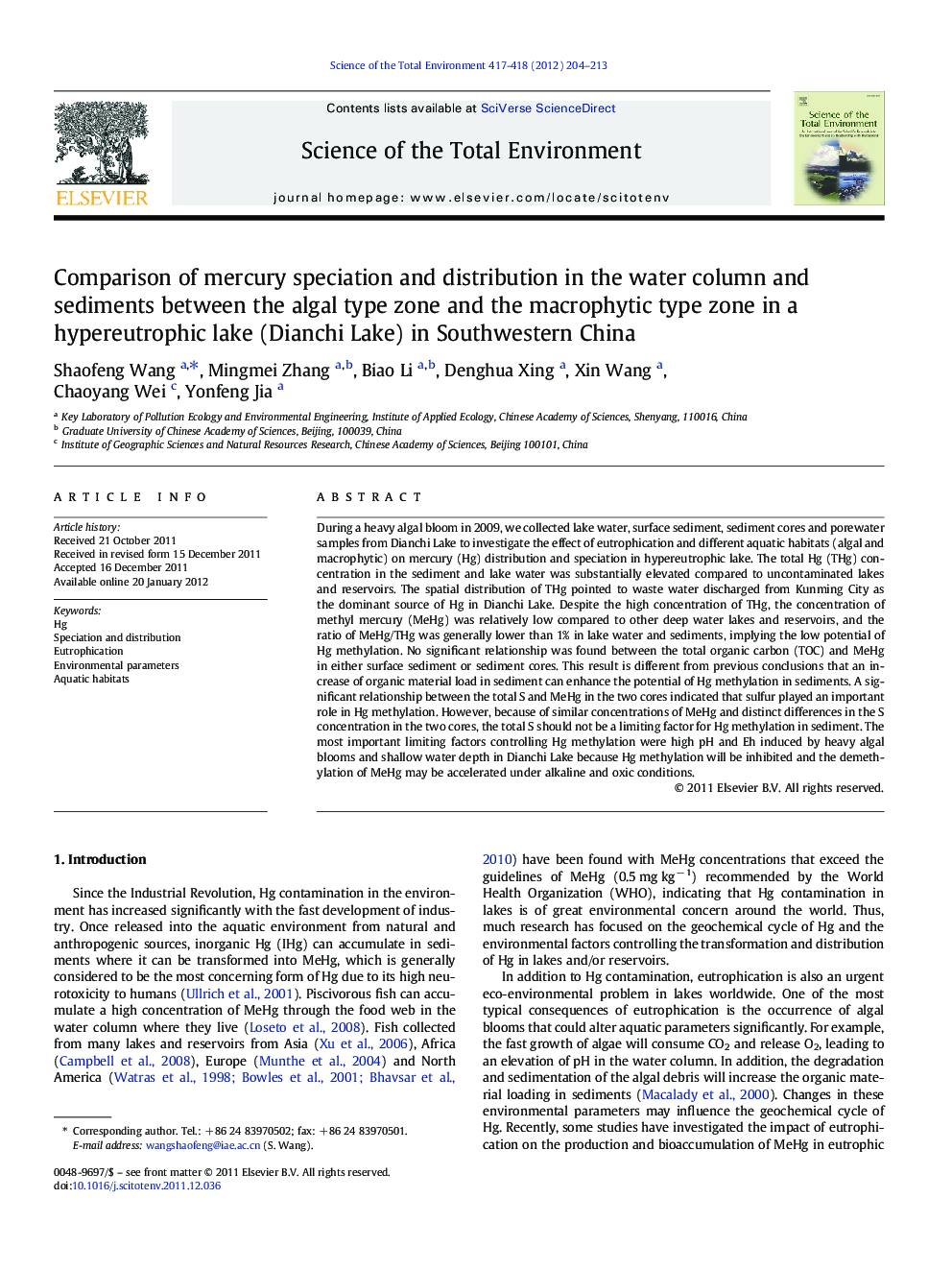| Article ID | Journal | Published Year | Pages | File Type |
|---|---|---|---|---|
| 4429674 | Science of The Total Environment | 2012 | 10 Pages |
During a heavy algal bloom in 2009, we collected lake water, surface sediment, sediment cores and porewater samples from Dianchi Lake to investigate the effect of eutrophication and different aquatic habitats (algal and macrophytic) on mercury (Hg) distribution and speciation in hypereutrophic lake. The total Hg (THg) concentration in the sediment and lake water was substantially elevated compared to uncontaminated lakes and reservoirs. The spatial distribution of THg pointed to waste water discharged from Kunming City as the dominant source of Hg in Dianchi Lake. Despite the high concentration of THg, the concentration of methyl mercury (MeHg) was relatively low compared to other deep water lakes and reservoirs, and the ratio of MeHg/THg was generally lower than 1% in lake water and sediments, implying the low potential of Hg methylation. No significant relationship was found between the total organic carbon (TOC) and MeHg in either surface sediment or sediment cores. This result is different from previous conclusions that an increase of organic material load in sediment can enhance the potential of Hg methylation in sediments. A significant relationship between the total S and MeHg in the two cores indicated that sulfur played an important role in Hg methylation. However, because of similar concentrations of MeHg and distinct differences in the S concentration in the two cores, the total S should not be a limiting factor for Hg methylation in sediment. The most important limiting factors controlling Hg methylation were high pH and Eh induced by heavy algal blooms and shallow water depth in Dianchi Lake because Hg methylation will be inhibited and the demethylation of MeHg may be accelerated under alkaline and oxic conditions.
► We investigated Hg speciation and distribution in a hypereutrophic lake during algal bloom. ► Anthropogenic discharging is an important source of Hg in the lake. ► Hg diffusion from sediment is a non-point source of total Hg in lake water. ► Total organic carbon had no significant relationship with total and methyl Hg in sediment. ► Elevated organic material loading did not increase the production methyl Hg in sediments.
